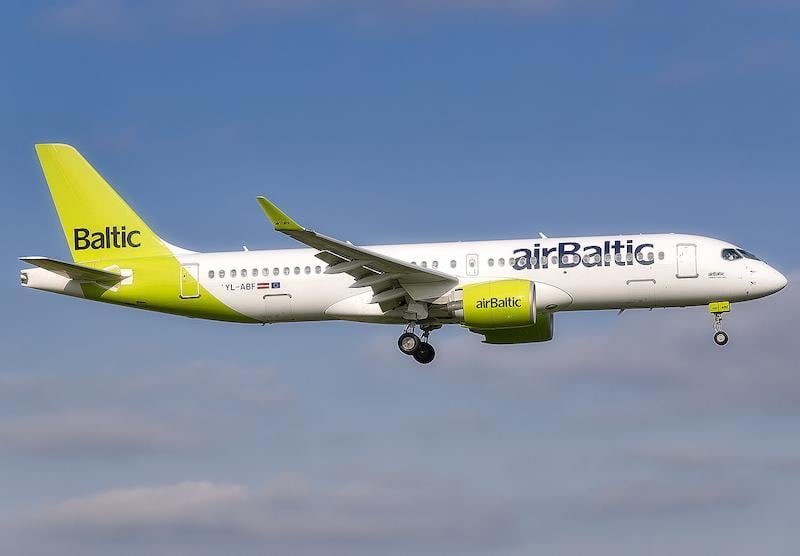
Latvian carrier airBaltic operates an all-Airbus A220-300 fleet
With Aviation Week’s MRO Baltics & Eastern European Region (BEER) event on May 14-15 in Prague, this week’s Flight Friday looks at how the region’s flight cycles, indexed to the equivalent month in 2019, excluding Russia, are faring compared to 2019.
Eastern Europe has had several factors post-pandemic to deal with. The Russian invasion of Ukraine in February 2022, being the most prominent, led to a drop in utilization as operators suddenly found that they couldn’t operate some of their routes. Closure of Ukrainian and Russian airspace led to some routes becoming unprofitable, therefore unsustainable. However, operators in the region have adapted to cope with the difficulties.
When we look at the data split out by aircraft class, the widebody fleet is operating 40+% more flights in 2025 compared to 2019. This coincides with an uptick in fleet that also grew 40+% since the end of Q1 2019.
Narrowbody utilization is also up by 20%. With an in-service increase that is a little below 20%, it shows that operators in the region are making more use out of the assets that they have. Eastern European operators help provide a lot of Aircraft, Crew, Maintenance and Insurance (ACMI) capacity to the market to help other operators supplement their fleets periodically, which has certainly helped the fleet size growth.
Regional aircraft utilization has shrunk. The jets are down 20%, which is in line with global averages with the slow decline of the regional jet in-service fleet, however turboprops utilization has also declined, which tends to buck the global trend. This is due to the drop in fleet, in part because of airBaltic’s decision to remove the de Havilland Canada DHC-8 from service and focus solely on the Airbus A220.
This data was put together using Aviation Week’s Tracked Aircraft Utilization database.





